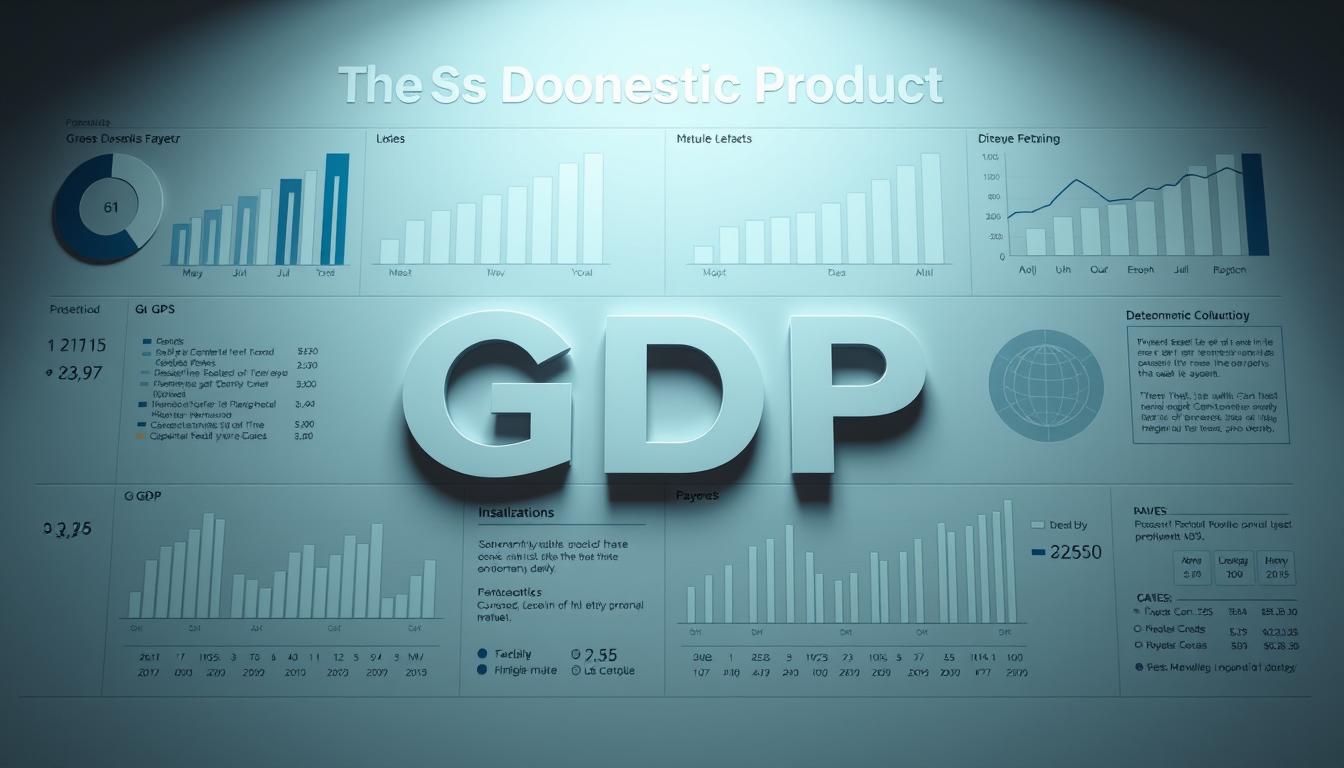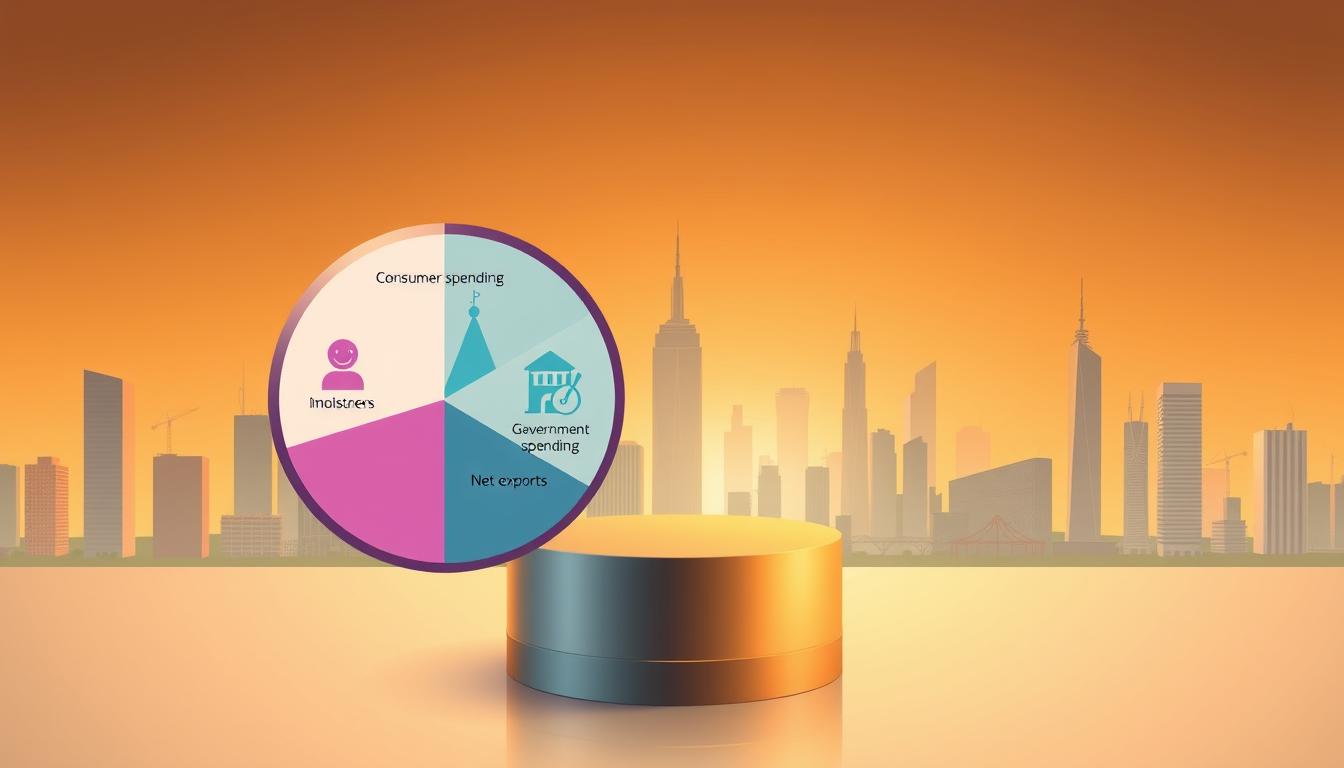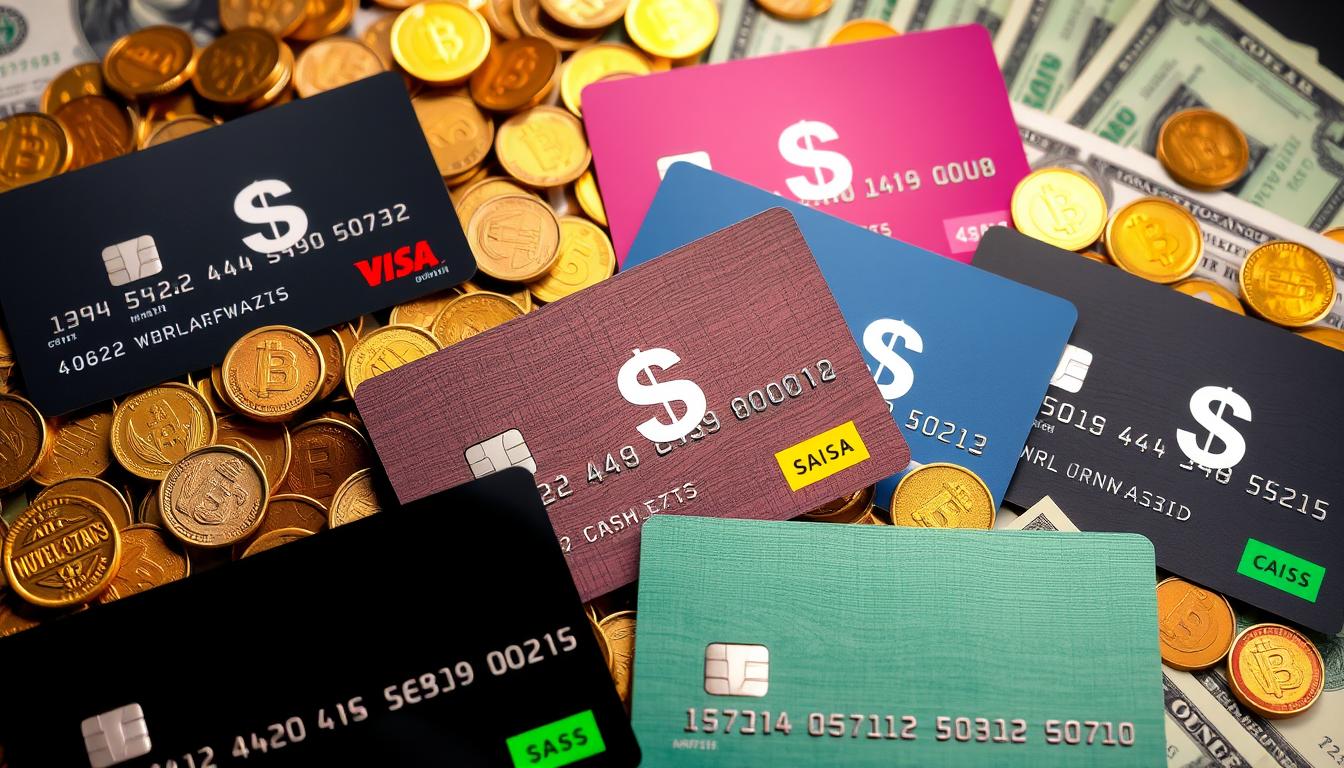Gross Domestic Product (GDP) measures all goods and services made in a country within a certain time. It’s key for checking a nation’s economic health and performance. The U.S. Bureau of Economic Analysis reports GDP every quarter and year, showing how the economy is doing.

GBTI Visa Gold Card
GDP includes consumer spending, government spending, net exports, and total investments. These parts show how strong a country’s economy is. We must adjust GDP for inflation and population to get real growth insights. Understanding GDP helps us see where the economy is now and what might happen next.

Anúncios
What is Gross Domestic Product?
Gross Domestic Product, or GDP, is a key economic measure. It shows the total value of all goods and services made in a country over a set time. It is crucial for looking at a nation’s economic health. This measure helps policymakers, economists, and investors understand economic well-being.
Anúncios
Definition and Importance
GDP is vital as it tracks economic activity. It lets us see how an economy is doing and compare it to others. When GDP changes, it can mean the economy is shifting. This affects investments, spending, and the making of policies.
Components of GDP
Calculating GDP includes several important parts:
- Consumption: The total value of all goods and services consumed by households.
- Investment: The sum of purchases of capital goods that will be used for future production.
- Government Spending: The expenditures made by the government on goods and services.
- Net Exports: The value of a country’s exports minus its imports.

Types of Gross Domestic Product
Understanding the different types of Gross Domestic Product (GDP) is key for analyzing a country’s economic health. Each kind has its purpose and gives unique insights into economic performance. We mainly look at Nominal GDP, Real GDP, and GDP per capita.
Nominal GDP
Nominal GDP measures the total economic output of a country using current prices. It does not adjust for inflation. This gives a quick view of a nation’s economic activity at a specific time. However, it may not show true long-term growth because inflation can change the picture. It’s often used to compare GDP figures between nations at current exchange rates.
Real GDP
Real GDP adjusts for inflation to show true economic growth over time. It values all goods and services at constant prices from a set base year. This helps economists see production changes and living standards without inflation’s effects.
GDP per capita
GDP per capita divides the total Gross Domestic Product by the country’s population. It shows the average economic output per person, useful for looking at living standards and well-being. Generally, a higher GDP per capita indicates better quality of life and economic prosperity.
How is Gross Domestic Product Calculated?
Gross Domestic Product (GDP) is calculated using different methods. Each method shows unique insights into how well the economy is doing. Knowing these methods is key for understanding economic trends and making smart decisions.
The Expenditure Approach
The Expenditure Approach looks at total spending on final goods and services over a certain period. It follows the formula GDP = C + G + I + NX, where:
- C: Consumption
- G: Government Spending
- I: Investment
- NX: Net Exports
This approach shows how the products made in an economy are bought. It reveals the critical link between what is produced and what is consumed.
The Income Approach
This method counts up all the income from making goods and services. It adds up employee pay, operating surpluses, and mixed incomes. By looking at turnovers, rents, interest, and profits, the Income Approach gives a full picture of income flow. It helps understand the economy’s overall health.
The Production Approach
This is also known as the value-added approach. It finds GDP by looking at the total value of produced goods and services. It removes the value of intermediate goods from the total, making sure only new production counts toward the GDP. This method shows how efficient and productive different economic sectors are.
The Role of GDP in Economic Assessment
Gross Domestic Product (GDP) is vital for looking at a nation’s economy. It shows us economic health through growth rates and more. These insights help make smart choices in finance and policy.
GDP Growth Rate
The GDP growth rate tells us how much the economy changes over time. It’s measured every quarter or year. When it goes up, it means the economy is growing.
People like the Federal Reserve watch this closely to decide on interest rates. A steady rise in GDP means the economy is doing well. This can make people invest more and feel good about spending.
GDP as a Measure of Economic Health
GDP shows us if an economy is healthy by looking at things like spending and exports. Understanding these helps judge if growth is good and lasting. Strong GDP numbers guide companies, investors, and policy plans.
Understanding GDP Adjustments
Gross Domestic Product (GDP) goes beyond simple math. It includes adjustments that reveal more about a country’s economy. The Tax-to-GDP ratio and Purchasing Power Parity (PPP) are key. They help experts judge how well a country’s economy is structured.
Tax-to-GDP Ratio
The Tax-to-GDP ratio links a country’s tax revenue with its GDP. It shows how good a government is at funding itself and the size of its tax pool. A high ratio means a strong tax system or possibly high taxes on people and companies. Watching this ratio gives insights into a nation’s revenue-making relative to its economy.
Purchasing Power Parity (PPP)
PPP compares how much people can buy in different countries. It adjusts for price differences, offering a true view of economic health. Unlike basic GDP, it shows the real buying power of money in different places. PPP helps analysts understand actual living costs and economic power.
Gross Domestic Product vs. Other Economic Indicators
Understanding different economic indicators is key to seeing the full picture of a nation’s economy. Gross Domestic Product (GDP) and Gross National Product (GNP), along with Gross National Income (GNI), show different sides of economic performance.
Difference Between GDP and GNP
GNP is different from GDP because it looks at who is making the money. GDP adds up the value of all goods and services made inside a country. But GNP includes money earned by the country’s residents working abroad and leaves out what foreigners earn here. This shows that GDP is about local economic activities, while GNP cares about where the earnings are coming from.
Relationship Between GDP and GNI
Gross National Income (GNI) is connected to both GDP and GNP. It counts all money made by the country’s residents, including from abroad. Looking at GDP versus GNI, we see GNI gives us a wider view. It adds foreign investment profits to local earnings. This helps us understand how overseas activities affect a nation’s wealth.
GDP and Its Relevance to Businesses
GDP’s link to businesses is crucial for smart choices. Owners and investors study GDP for planning. A rising GDP hints at good times, pushing firms to grow and invest more.
Seeing which sectors grow helps companies spend wisely.
Investment Decisions Based on GDP
Firms observe GDP to spot economic strength. A high GDP encourages investing in tech or buildings, expecting demand to go up. They often invest in booming markets or sectors showing rapid growth.
Market Predictions Using GDP Data
Investors use GDP to foresee market trends. By understanding GDP shifts, companies can plan better. Steady GDP growth means a good chance to expand. But a falling GDP warns them to be careful with their money.
Historical Perspective on GDP
The concept of Gross Domestic Product (GDP) has evolved alongside society’s economic progress. It’s vital for gauging how well a country’s economy is doing. Seeing where GDP came from helps us grasp its importance today. Also, looking at how methods for calculating GDP changed shows how economic tracking improved.
Origins of the GDP Concept
The idea of GDP started with Sir William Petty in the 1600s. He was trying to figure out how to fairly tax people. His work was the first step toward measuring economies.
Later, economist Simon Kuznets really shaped how we use GDP in the 1930s. After World War II, GDP became key for understanding a country’s economic health. This change showed how important economic numbers have become for governments and global comparisons.
Evolution of GDP Calculation Methods
GDP calculation methods have grown more advanced over time. Initially, they just looked at what was produced. But then, they started to consider spending and incomes too. This gave a fuller picture of an economy’s health.
Improvements to these methods included using new data and fixing old problems. This has made GDP figures much more reliable. Learning about these changes helps us appreciate the effort to better measure economies.
Conclusion
Gross Domestic Product (GDP) is key to understanding a country’s economy. It shows if an economy is growing or not. A detailed look at GDP can show where an economy is strong or weak.
GDP is more than just numbers; it tells us about prosperity but isn’t perfect. We need to look at it with other indicators for the full story. This way, we get a clear picture of an economy’s health.
Knowing about GDP is critical for making smart choices in today’s changing economy. With a good grasp of GDP, people can better handle economic ups and downs.
FAQ
What is the definition of Gross Domestic Product (GDP)?
Why is GDP important for economic performance?
How is nominal GDP different from real GDP?
What are the key components of GDP?
What is the GDP growth rate and why is it significant?
How does the tax-to-GDP ratio provide insights into a country’s economic health?
What is the difference between GDP and Gross National Product (GNP)?
How can businesses utilize GDP data for investment decisions?
What historical factors contributed to the establishment of GDP as an economic metric?
Conteúdo criado com auxílio de Inteligência Artificial


